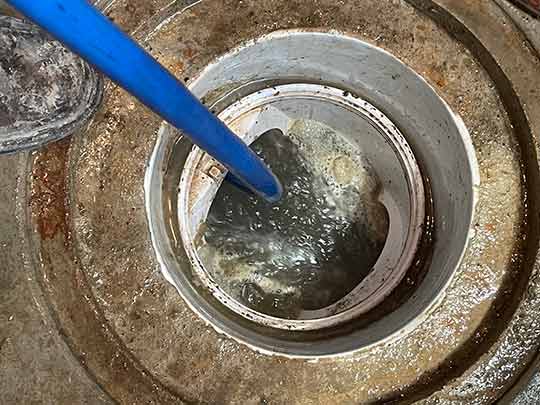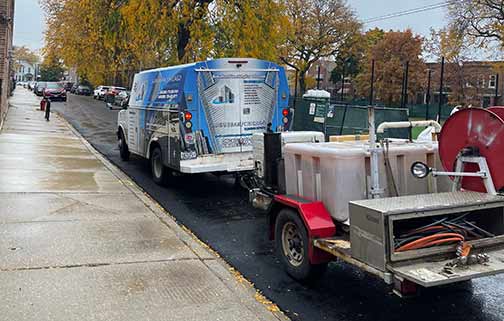
Commercial plumbing systems see more use than those in a typical home. Where the plumbing in a single-family home may only have six people using it, explains Pro X Management, commercial systems often have to serve the needs of hundreds of people within a single hour. As such, commercial plumbing systems are appropriate for commercial properties.
This heavy usage makes commercial plumbing systems prone to blockages. Also, while it is easier to control how people use the plumbing in a home, commercial plumbing is more likely to have unknown materials inside it due to the sheer number of people using it.
That is why you need a timely and cost-effective way to deal with issues in your commercial plumbing system. Delays in solving problems can affect the operations of the businesses on the premises, impose hardships on their employees and drive away customers.
Hydro-Jetting: The Ideal Solution for Commercial Plumbing Systems
Hydro-jetting is a powerful solution uniquely suited to the needs of commercial plumbing. Hydro-jetting clears clogs from drains and sewer lines in the most efficient manner. It can also be used as preventative maintenance to keep pipes clean and in good working order.
What is Hydro-Jetting? And How Does it Work?
Hydro-jetting uses high-pressure water to clear clogs and waste buildup inside plumbing pipes. It is a gas-driven pump that pulls water from a large tank and pressurizes it before sending it through a specialized nozzle fed into the drainpipe.
A hydro-jetting system comprises the following:
- A gas pump or motor
- A large water tank
- A set of specialized nozzles
- A long hose
The procedure for hydro-jetting a clogged drain follows these steps:
Step one
Typically, the line is first snaked to make it easier to do a video camera inspection of the pipes. The snake pokes a hole in the material that clogs the pipe to let a video camera pass through.
Step two
A video camera inspection of the sewer line follows. That involves inserting a cable into the drain with a special video camera attached. The camera captures the pipe’s interior as the cable is fed into the line. It sends the live feed to a screen that the plumber is monitoring. That helps to see the pipe’s condition, locate the clog, determine its cause and decide the best way to handle it.
Step three
Fill the tank with water and attach a nozzle at the end of the hose to hydro-jet the line. The correct nozzle for the operation depends on the type of clog. Commonly-used nozzle types are flat jet nozzles for a fan-shaped spray pattern, point jet nozzles for a focused jet, and rotating nozzles for cleaning pipes.
Step four
With the nozzle attached to one end, the hose is fed into the drain pipe or sewer line before the pump is switched on. A jet stream of water is then sent into the pipe with the water pressure ranging from 4,000 pounds per square inch (psi) to as high as 60,000 psi (414 MPa). The proper pressure for the operation depends on the type of blockage and the pipe’s condition.
Step five
This stream of water is powerful enough to cut tree roots, remove rocks and gravel, and clear away hair clogs, sand, or silt. The hose is fed into the drain until it passes the clog’s location and washes the dislodged debris into the main sewer in the street.

Hydro-jetting is a powerful solution uniquely suited to the needs of commercial plumbing. Hydro-jetting clears clogs from drains and sewer lines in the most efficient manner.
What are the Benefits of Hydro-Jetting?
Compared to other drain-cleaning methods, hydro-jetting offers the following advantages:
Lasting results
Hydro-jetting is highly-effective – the effects of hydro-jetting your pipes will last a very long time. Due to the extremely high pressure of water used in hydro-jetting, this method cleans pipes better than any other. Clean pipes are less likely to accumulate debris because of their smooth inner surfaces.
No toxic chemicals
Hydro-jetting uses the mechanical force of moving water to clear away debris. Unlike drain cleaning chemicals, hydro-jetting does not leave a cocktail of toxic chemicals inside your pipes. There is no chance of toxic fumes seeping out from the pipes to harm humans or the environment.
Pipe safety
Despite the high pressure of the water used to hydro-jet the commercial drain pipes, the operation doesn’t harm the pipes. Pipe walls and other plumbing components will not be damaged by this method. During the sewer camera inspection, if the pipes appear to have cracks or weak sections, this will be taken into account when hydro-jetting.
Versatility
This method can be scaled up or down to meet the needs of any commercial property. You can alter the type of nozzle used during the operation to suit particular problems with the plumbing. You may also use Hydro-jetting as routine maintenance for the plumbing.
—